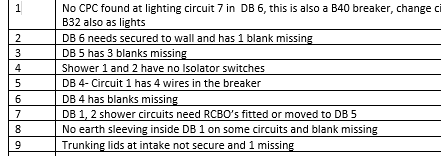Given that on Xmas Eve was called out to yet another example of an electric shower isolator burning off it's neutral at the terminal, is it time to cease fitting isolators for the likes of ovens and showers?
Can we not just isolate in the consumer unit instead?
From what I have seen, there isn't an isolator of sufficient quality on today's market which is capable of carrying out it's function without burning out during normal service.
Compliments of the Season to one and all.


